Hibiscus can produce bright blooms frequently. When growing Hibiscus, you will want them to develop quickly to enjoy those colorful blooms. So, you might be wondering how fast the hibiscus plant grows.
Hibiscus plants enjoy medium to rapid growth rates if provided with the right care and maintenance. Their average growth rate is 24 inches per year. If provided with the right care, they can reach 10-15 feet in height within 2-3 years. Their growth rate slows down during the winter season.
This article will help you know the average growth rate of Hibiscus depending on the varieties and situation. We will also share some factors that determine their growth rate, and you must follow them to encourage Hibiscus’s growth.
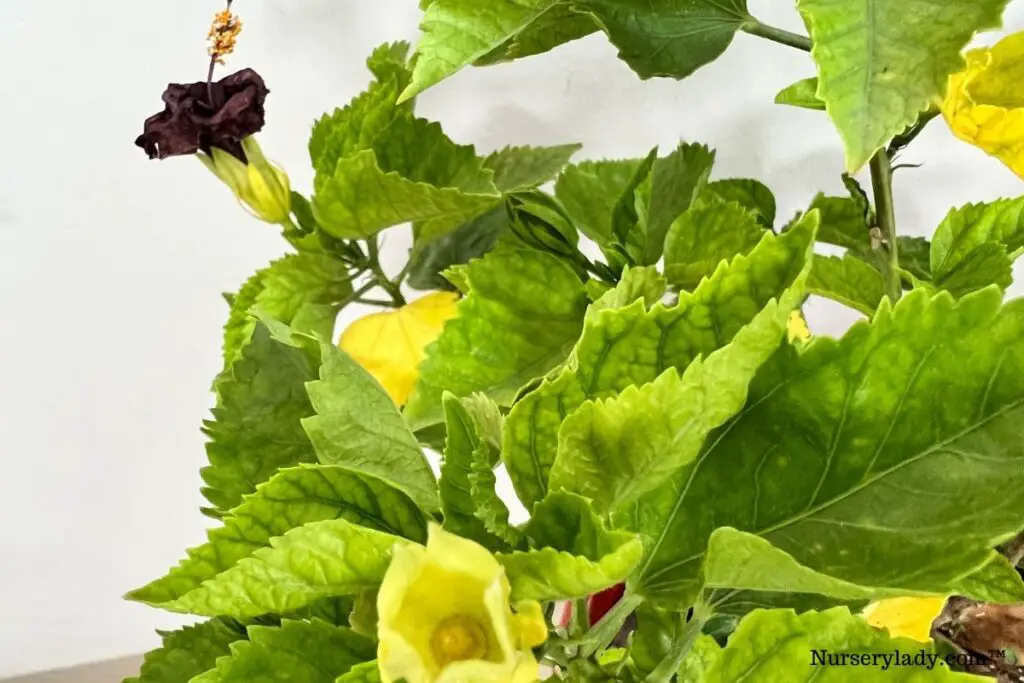
How fast does a Hibiscus plant grow?
All the varieties of Hibiscus plants grow quickly enough if they grow around their ideal environment.
However, the timing varies depending on the different varieties.
The type of variety you own will impact the growth rates.
Some varieties grow incredibly faster than the other varieties.
On the contrary, some enjoy moderate growth rates.
Whatever the difference is, you will get to see them growing and flowering pretty quickly after planting.
If you don’t find them growing at their optimum rate, there is something incorrect in their growing conditions.
Without their requirements, Hibiscus plants will slow down their growth.
Sometimes, it is just the season for which they grow slowly.
For example, without enough sunlight, the plant won’t be able to use its energy to its full potential.
Or, if they are under partial shade, they might remain fine, but it will affect flowering.
However, some shade is good during the summer afternoons as it reduces the chances of sunburns.
Now, let’s see how the growth rate of Hibiscus differs depending on certain situations and varieties.
How fast does a Tropical Hibiscus plant grow?
The growth rate of Tropical Hibiscus is quite impressive.
They can reach heights around 7 to 12 feet within only 3 years.
They are greener than the other varieties, and their blooming cycle is quite long.
Tropical Hibiscus can bloom throughout the year if their growing conditions are perfect.
However, if you live in a zone that doesn’t receive the ideal climate of Tropical Hibiscus, then you may not find such frequent flowers, especially during the winters.
If you want to have a big plant that grows quickly with colorful blooms, choose Tropical Hibiscus.
But the plant will drop off leaves during the winters when temperatures drop below 50°F.
So, keep in mind the zone you live in and grow them.
How fast does Rose of Sharon grow?
Rose of Sharon is a famous and common Hardy Hibiscus plant.
They are slower than the Tropical Hibiscus plants.
They generally have a moderate growth rate if given the right care and maintenance.
Rose of Sharon reaches a height of 8 to 12 feet and spreads 4 to 10 feet once mature.
They take at least 7 to 8 years to reach maturity if grown under ideal growing conditions.
They are ideal for zones 5b to 9a.
They can tolerate cold more than the Tropical Hibiscus plants.
If you belong to colder zones and want big Hibiscus blooms in your plant, go for the Rose of Sharon.
How fast will Rose Mallow (Hibiscus Moscheutos) variety grow?
Rose Mallow is a Hardy shrub Hibiscus native to zones 4-8.
These plants are the fastest among the other varieties.
This Hibiscus can grow about 3 to 8 feet tall in one growing season.
Rose Mallow can even flower in the first year if you grow them from seeds.
Rose Mallows are generally perennial hybrid varieties.
They grow well in salt marshes and marshy forest areas of the south-eastern US.
These varieties bloom in the months of summer and continue flowering into early autumn.
How fast can potted Hibiscus plants grow?
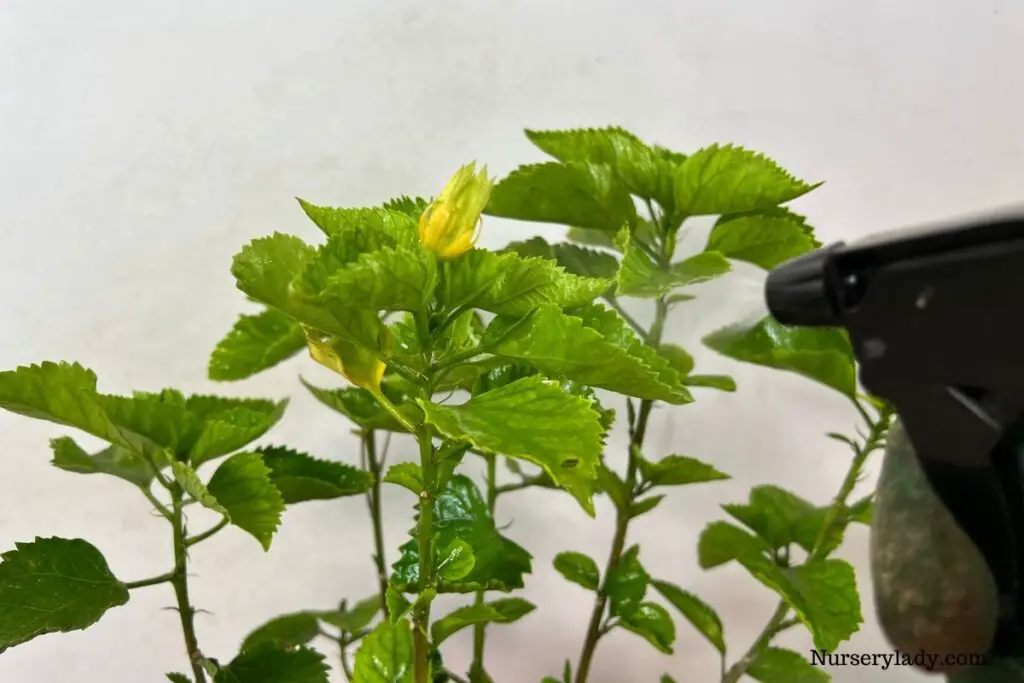
People that belong to freezing temperature areas grow Tropical Hibiscus in containers.
Growing these plants in the ground can be a danger to them.
That is why they are grown in containers or patio planters.
It also helps in making the shifting easy.
Potted Hibiscus has a moderate growth rate and is not like those on the ground.
Potted plants grow better in summer than in any other month.
A 2-foot-tall plant will progress to 4 feet if given bright direct sunlight in a single summer.
Though this Hibiscus is ideal for containers, you can still plant them directly on the ground if you live in warmer climates.
These plants will bloom if placed near a sunny window.
They won’t grow that much with only indoor light.
At least provide them with 2-3 hours of bright direct sunlight and filtered sunlight throughout the day.
They will thrive if placed over a patio in summers.
Looking for gardening supplies? We have tested 100's of products before recommending them to you guys. Check out our best pick below:
| Image | Gardening Supplies | Best Price? |
|---|---|---|
 Top
Top Top
Top | Raised Garden Bed Kit | Check On Amazon |
 | XLUX Soil Moisture Meter, Plant Water Monitor, Soil Hygrometer Sensor for Gardening, Farming, Indoor and Outdoor Plants, No Batteries Required | No Results |
 Top
Top Top
Top | 82 Pcs Garden Tools Set and Extra Succulent Tools Set | Check On Amazon |
 | Joeys Garden Expandable Garden Hose with 8 Function Hose Nozzle, Lightweight Anti-Kink Flexible Garden Hoses, Extra Strength Fabric with Double Latex Core, (50 FT, Black) | No Results |
 Top
Top Top
Top | Dual Chamber Compost Tumbler | Check On Amazon |
 Top
Top Top
Top | Sunnyglade Plant Stakes | Check On Amazon |
 Top
Top Top
Top | Organic Cold Pressed Neem Seed Oil | Check On Amazon |
 Top
Top Top
Top | Mighty Mint Gallon :-Insect and Pest Control Peppermint Oil | Check On Amazon |
 Top
Top Top
Top | Scotts DiseaseEx Lawn Fungicide | Check On Amazon |
 Top
Top Top
Top | Jacks Classic 20-20-20 All Purpose Fertilizer | Check On Amazon |
 Top
Top Top
Top | 30,000 Seeds Pollinator Attracting Wildflower Mixture | Check On Amazon |
 Top
Top Top
Top | Survival Vegetable Seeds Garden Kit-Over 16,000 Seeds | Check On Amazon |
How fast will the Hibiscus propagate?
Propagating Hibiscus is a good and economical way to get more Hibiscus plants.
You can propagate it by cutting and from seeds.
From cuttings
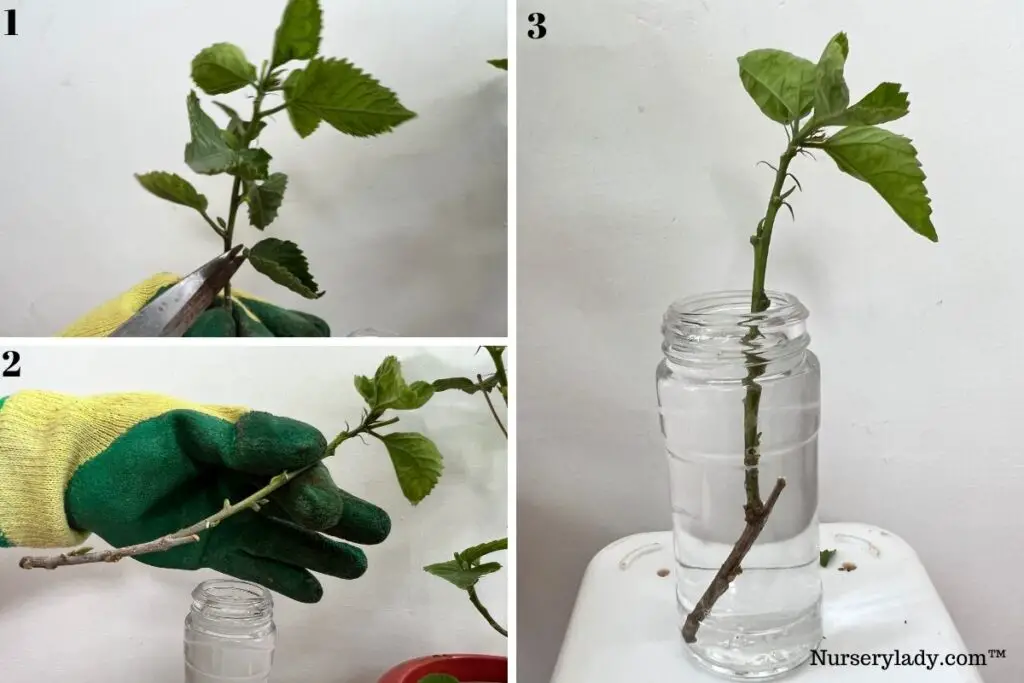
To propagate Hibiscus, take a cutting from a healthy plant, from the softwood or new growth, cut off some leaves except 2-3 at the top, dip the ends in rooting hormone and plant it in well-drained soil.
If taken proper care of, the cuttings will develop roots in 1-2 weeks and take 4 to 8 weeks to grow new leaves.
Within 6 to 24 weeks, the cutting will develop into a full-grown plant.
From seeds
Both Hardy and Tropical Hibiscus can be grown from seeds.
While propagating Tropical Hibiscus from seeds, it will sprout a single seedling within 7 to 30 days.
On the other hand, Hardy Hibiscus will take 2 to 3 weeks to sprout out.
Though the Tropical plants take time to sprout, they grow faster than the Hardy Hibiscus after sprouting.
How can I encourage Hibiscus to bloom faster?
The Hibiscus plants will only bloom if they are given proper care and maintenance.
The care tips determine the growth rate of Hibiscus.
If you follow them properly, your plant will grow at the same rate as I mentioned in the article previously.
Let’s have a look at the care tips in detail.
Give them enough sunlight for the best growth.
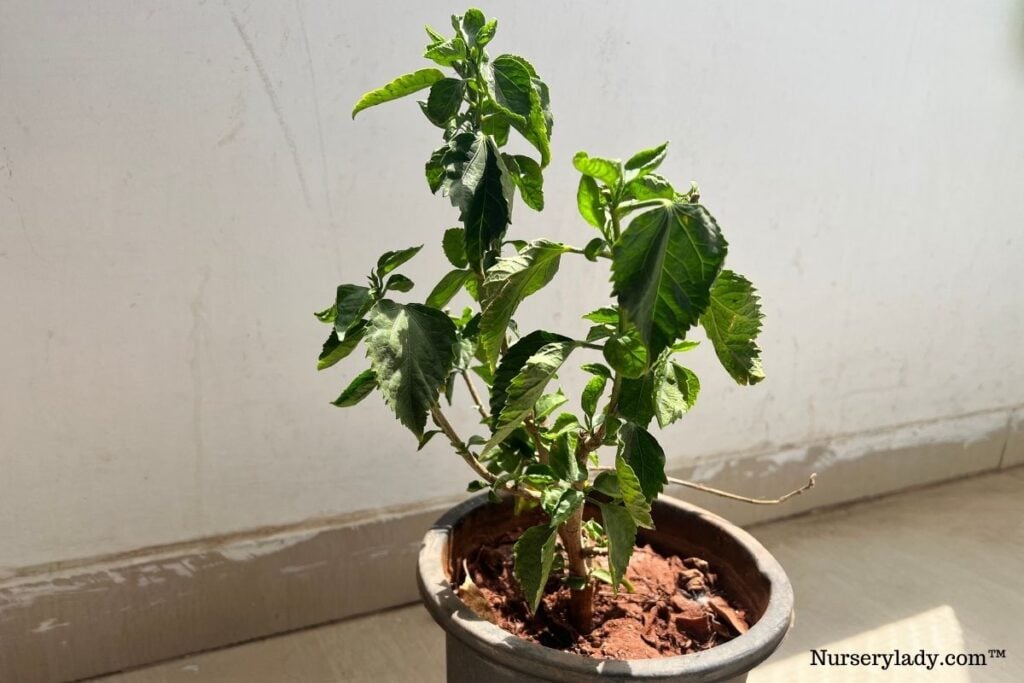
- Hibiscus needs bright direct sunlight for 6-8 hours to grow and flower. Without enough sunlight, the plant cannot grow at its full potential. As a result, they will grow slowly and affect flowering. So, you must see that Hibiscus receives sufficient sunlight.
- If the weather is too scorching, fix shading nets. But still, the plant should at least get 2-3 hours of direct sunlight in the morning. For the rest of the day, let them have filtered sunlight. This will save them from sunburn.
- In the winters, they should receive more sunlight to remain warm.
Also read: How Much Light Does A Hibiscus Plant Need? (What Kind, How Much & More)
Water sufficiently
- Hibiscus requires watering 4-5 times per week.
- In summers, the sun and heat will make the soil dry faster. So, water them regularly. Sometimes, you have to water them 2 times in one day.
- Potted plants outside will need more water, especially if the pot is terracotta. Half water gets drained from the drainage holes. And due to the pot’s porosity level, the water will dry faster. So, they will also need 2-3 times watering per day in scorching summer.
- In the winters, reduce watering. Water the plant once a week or every 2 weeks because they will be dormant.
- You cannot completely stop watering because the soil can dry fast due to dry weather. The best way is to check the soil and water them when the top 1-2 inches are dry.
Also read: How To Water Hibiscus Plant? (How Much, How Often & More)
Good soil quality can boost their growth.
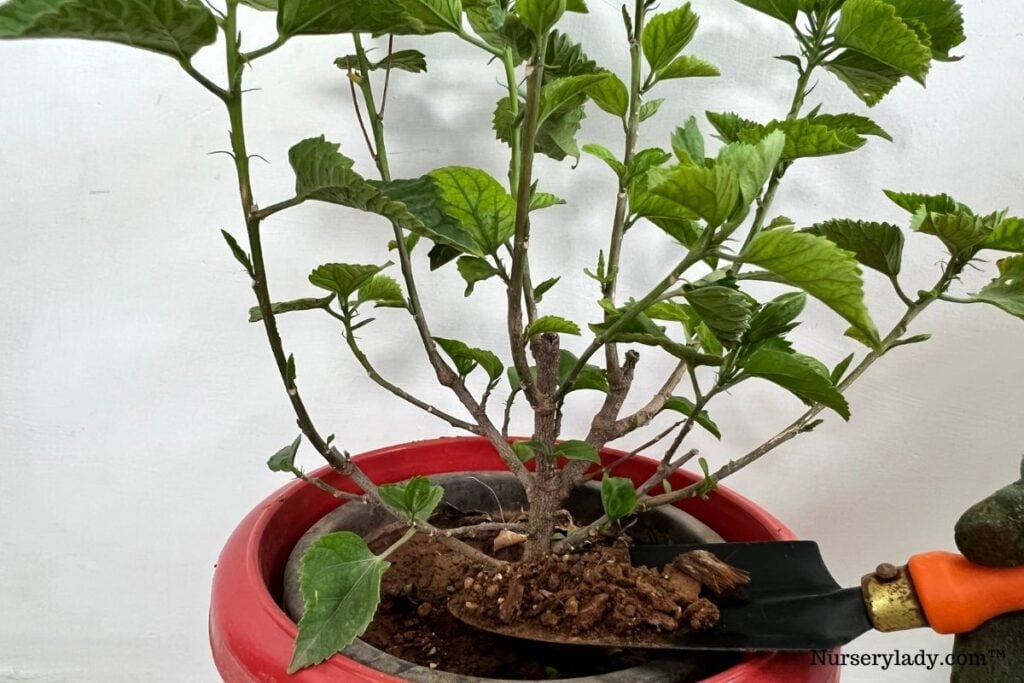
The Hibiscus plant enjoys well-drained but loamy soil.
The soil should drain the excess water, but it should also retain some moisture.
If the retention level is low, the plant won’t receive enough nutrients and moisture.
Without enough water or nutrients, the plant won’t be able to maintain its optimal growth.
Some good soil mixes for good health and fast growth of Hibiscus are:
1st recommendation
2nd recommendation
- 2 parts potting soil
- 2 parts peat moss
- 1 part vermiculite or perlite
3rd recommendation
- 1/3 potting soil
- 1/3 peat moss or coco coir
- 1/3 compost or worm castings
4th recommendation
- 50% peat
- 45% composted bark
- 5% perlite
Also read: What Kind Of Soil Does A Hibiscus Plant Like? (+Best Soil Mix)
Fertilizers can encourage faster growth greatly.
Hibiscus will require fertilizing for good growth and flowering.
Use fertilizers that are average in nitrogen, low in phosphorus, and high in potassium, for example, one with an NPK value of 17-5-24.
If you are using time-release fertilizers, give them during the 4 specific times of the year:
- During the early spring
- When the plant has finished its first cycle of blooming
- Halfway through the summer
- At the beginning of winter
Use them every 3 to 6 months throughout the growing season.
Don’t use time-release during the winters.
In the case of liquid fertilizers, apply them every 2 weeks in the growing seasons and every 4 weeks in winter.
Avoid if the plant is dormant.
You can also use organic fertilizers, like eggshells, Epsom salt, vinegar, aquarium’s dirty water, wood ash, etc.
Never skip fertilizing.
It helps to encourage growth faster if accompanied by correct watering and sunlight.
Also read: What Is A Good Fertilizer For Hibiscus Plants? (Ideal Ratio+Best Pick)
Maintain the correct temperatures
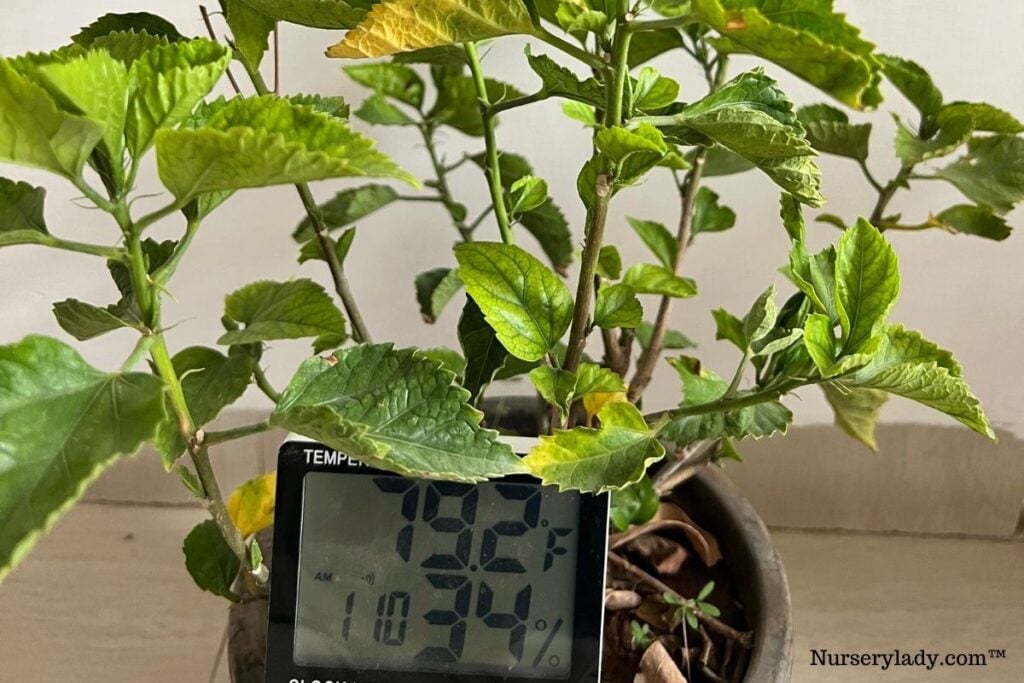
Hibiscus grows best at temperatures ranging between 60 and 75°F.
Slow or no growth in winter is natural.
For adequate growth speed, plant Hibiscus according to their zone.
Tropical Hibiscus plants are from zones 9-11, and Hardy Hibiscus is from zones 4 to 8.
Also read: Hibiscus Temperature Tolerance: Ideal Range+USDA Zones
Humidity can keep them growing.
Being tropical plants, Hibiscus enjoys high humidity levels from 50% to 70-80%.
Adequate humidity helps maintain the moisture level and encourages the plant to grow at a good speed.
To increase humidity:
- Use humidifiers for indoor plants.
- Keep pebble trays under the potted plants.
- Keep water trays around the outdoor plant and aquarium or water tanks around the indoor plant.
- Add mulch to the outdoor plant’s base.
- Mist your plants or install a misting system.
- Make sure that humidity doesn’t go above 90%.
Also read: Do Hibiscus Like To Be Misted? (+Humidity Requirements)
Repotting and soil rejuvenation gives space and nutrients.
Repotting and changing the soil can give them more space to grow busily.
The newly restocked nutrients in the new soil will help the plant grow faster.
Repot the plant every year with a new container and new soil.
The pot should be 1-2 inches bigger than the old one.
If you grow Hibiscus in the ground, revitalize the soil each year.
Tilt the top 6 to 8 inches of the soil, remove the debris, mix and turn over compost with the soil and plant the Hibiscus back.
To improve drainage, retention, and fertility, you can add ingredients like sand, gypsum, other organic matters, perlite, pumice, etc.
Right container size
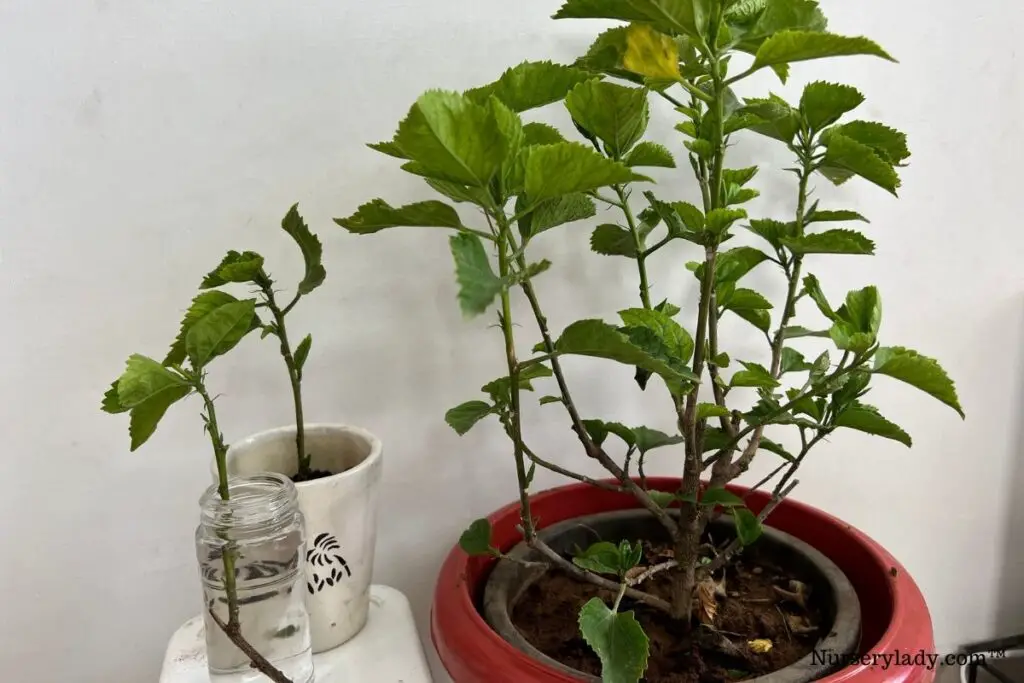
A small or big container can affect the plant’s growth speed.
A small container restricts the roots from growing and spreading.
They will become compact and exhausted while fighting for space and nutrients.
On the contrary, an oversized container requires more soil which takes a lot of time to dry, thus causing overwatering.
These obstacles intervene in the plant’s smooth development and prevent it from growing at its average speed.
So, use a container that suits the plant’s size.
For repotting, use a 1-2 inches bigger container than the old one.
Also, ensure drainage holes.
There should be at least 4 small holes or one big hole of the fingertip size.
You can use terracotta as it is porous, helps in good air circulation, and releases hot air.
This is minor but can help the plant grow at a good pace.
Also read: What Kind Of Pot Is Best For Hibiscus? (Size, Material & More)
Foliar spray with Epsom salt
Spraying the plant with Epsom salt can not only promote fast growth but also helps in fast flowering.
Mix 1 teaspoon of the salt with 1 liter of water, shake, and consider foliar spraying.
It gives the plant enough magnesium for good chlorophyll.
It helps to increase the overall growth and improve photosynthesis, leaf color, and flowering.
Dividing
If the plant gets too bushy over time, the root ball fails to provide nutrients and moisture to every part of the plant.
Over time, you will see the plant not growing at its usual rate, the center of the plant will be empty, the leaves will be thin, and the flowers will be small.
For optimum growth speed, divide the plant into two parts and plant them separately.
Over time, if you follow the correct care tips, you will see them growing at a suitable speed.
Pest control
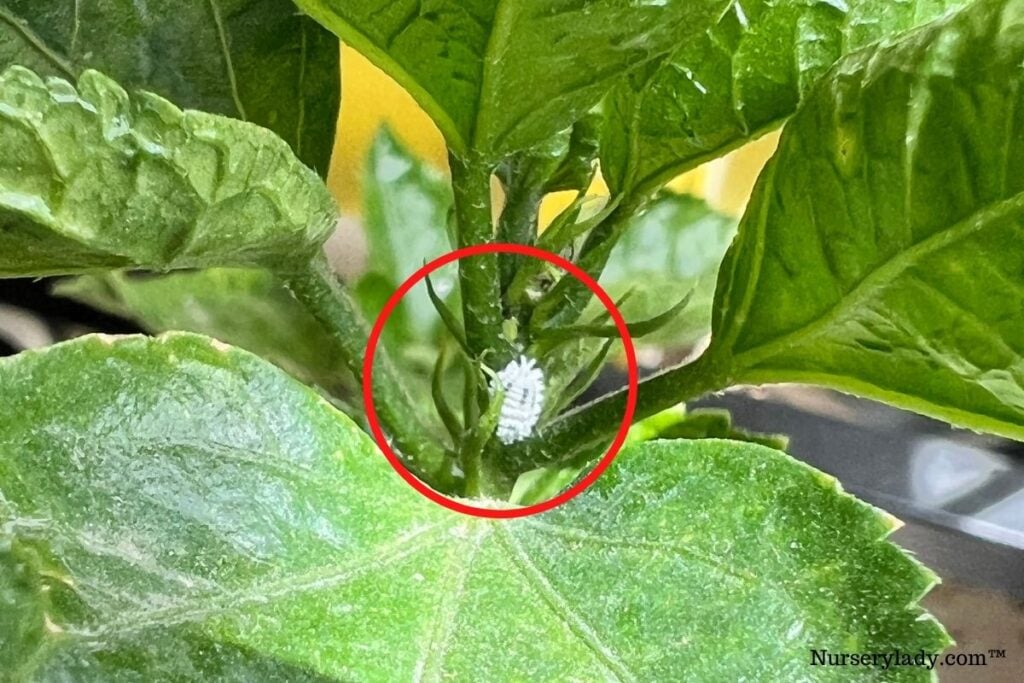
Managing pest infestation is essential, especially if you want fast growth and blooming.
Observe the plant closely, especially on both sides of the leaves and stems.
Common bugs are aphids, spider mites, mealybugs, whiteflies, and scales.
If you mist your plant for high humidity, consider using Neem oil.
Add 10ml of neem oil and a few drops of soap with 1-liter water.
You can also add Clove oil or Eucalyptus oil to increase the effect.
Spray it once every 15 days or once a month if there are no pests.
If there are pests, spray the mixture twice every week until the problem resolves.
It will not only keep your plant healthy but safe and away from pests.
Further, it promotes fast growth.
Final thoughts
Hibiscus plants are fast-growing plants, but stress can make them grow slowly. But they will grow energetically and quickly if they get their requirements in time, without any stress.
Some essential factors like sun, water, fertilizer, repotting, and container size can highly affect the plant’s growth. So, give more attention to these factors.
Besides, other factors like hardiness zone, humidity, foliar spraying, and rejuvenating the soil can keep the plant healthy in the long run. As a result, a healthy will no doubt grow faster.
Reference: Wikipedia, ASPCA, Louisiana State University Agricultural Center, American Society for Horticultural Science, Tropical Hibiscus by Texas A&M University, Sciencedirect.
